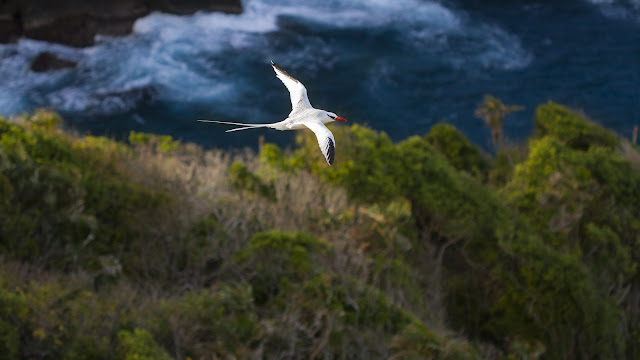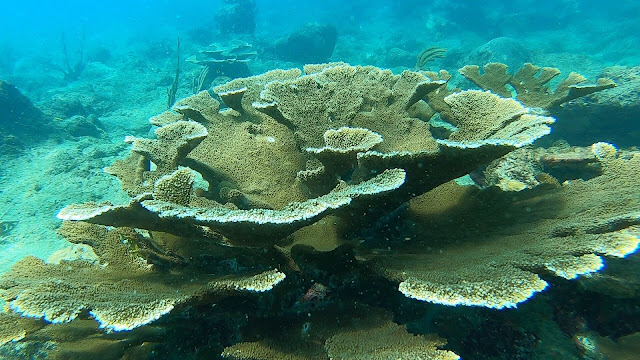In Need of Protection
Do we know all of Trinidad and Tobago’s Environmentally Sensitive Species? Dr Anjani Ganase suggests wider research and inquiry to expand the list, and to expose all citizens to what needs to be protected.
TT’s list of Environmentally Sensitive Species
Under the legislation, the Environmental Management Act (2000), species listed under the Environmentally Sensitive Species Rule are afforded full protection in Trinidad and Tobago. Under this Rule, the species can be animal or plant, may be endemic to Trinidad and Tobago or spend only part of its life cycle in our territory. Furthermore, any plant or animal listed for risk of extinction and overexploitation by any international convention that the government of Trinidad and Tobago is party to is eligible for becoming an ESS. The Rule limits the cutting, picking or uprooting of plants; and prohibits hunting and disturbing protected animals, especially during sensitive periods such as breeding season or during migration. By extension, the habitat the ESS utilises must also be managed and protected as a means of protecting the ESS. The conservation of ESS must therefore be integrated into the sustainable development plans of the country.
In Trinidad and Tobago, there are eleven listed Environmentally Sensitive Species: the Scarlet Ibis, the Trinidad Piping Guan, the West Indian Manatee, White Tailed Sabre-Wing hummingbird, Golden Tree Frog, Ocelot, and all five species of marine turtles (Olive Ridley, Hawksbill, Green, Loggerhead, and Leatherback). The active protection of turtles is a testament to the advocacy of certain individuals in Trinidad and Tobago. Indeed, all these species have been protected through local conservation efforts, based on information of their ecology and importance along with known local threats.

Leatherback turtles benefit from protection, bringing many visitors to beaches where they nest. Photo by Anjani Ganase 
Tobago's critically endangered Elkhorn coral is in need of protection. Photo by Anjani Ganase 
In need of protection, these boulder
brain corals partially bleached. Photo by Anjani Ganase
Many other species need protection
However, there are many species that deserve to be on the list by international recognition of importance or its local uniqueness. If we start with the international conventions that Trinidad and Tobago is party to, the Convention on International Trade in Endangered Species (CITES) of Wild Fauna and Flora (T&T signed in 1984), includes a number of threatened species found in Trinidad and Tobago included under Appendix I which is the list for species threatened with extinction and which deserve the highest level of protections. These include the Neotropical River Otter (Lontra longicaudis), which is present but in low numbers in Trinidad’s rivers. In our ocean backyard with an economic exclusion zone 15 times our land mass, many species of visiting whales and dolphins are also listed.
Under both CITES and the Specially Protected Areas and Wildlife (SPAW) Protocol (Trinidad and Tobago signed in 1990), reef-building stony corals are listed as threatened with extinction. These include elkhorn coral and the staghorn coral, two species that were once very common to our coral reefs and are now rarely seen in a few places. Other conventions such as United Nations Convention on Biological Diversity refer to the IUCN Red List as a tool for assessing the global extinction risk status of animal, fungus and plant species, and again many marine and terrestrial species of Trinidad and Tobago are found on its list.
Found nowhere outside Trinidad and Tobago
International conventions aside, often not recognised for protection are the endemic flora and fauna in T&T, meaning that these species are found nowhere else in the world. They are most vulnerable to extinction without any option for reintroduction. Management, monitoring and protection should be allocated to these species simply because of their endemism. T&T is home to over 70 endemic species. Most of which are made up of plants and therefore difficult to recognise by the general public, followed by invertebrates, but also includes fish, amphibians, birds, reptiles and one mammal. Of these, only two are listed as ESS, the Trinidad Piping Guan and the Golden Tree Frog. Many of the endemic plants grow in non-protected areas in both Trinidad and Tobago (Van den Eynden et al 2008). Other examples of endemic species include the Trinidad MotMot, Tobago False Coral Snake, Trinidad Worm Snake, the Guppy, Longhorned Beetle and the local tarantulas (Lasiodora trinitatis).
This brings us to our invertebrates that contribute a sizable portion of our local fauna and are significant to ecosystem health, yet vastly ignored. In our seas, corals are invertebrates responsible for building marine cities. They are ignored, rapidly declining over the last 15 years with no existing marine management to protect them from local extinction.
What about the many other species in Trinidad and Tobago that also deserve the ESS status not simply because of ecological or threatened status but for other reasons such as their iconic presence, economic importance or rarity. These include the spectacled caiman and the Cuvier's dwarf caiman, 70 species of local bats (one endemic species), the channel-billed toucans, or the giant boulder brain coral.
Boulder brain corals - while not present on any international convention list except for IUCN - have grown unique populations of large old colonies off northeast Tobago. I have not seen these anywhere else in the Caribbean. Furthermore, while the species is listed as vulnerable, the status is yet to be updated since disease has decimated populations across the Caribbean. Is this something worth protecting?

Endemic species, Channel-Billed Toucans. Photo by Faraaz Abdool 
Endemic Trinidad Motmot. Photo by Faraaz Abdool
How to designate an Environmentally Sensitive Species?
Under the Environmental Management Act, scientific evidence is needed to support the justification for a designation and to inform the type of activities that would be prohibited according to the Rule. Additionally, suggested management, budgets and a logistical framework are needed, so that the responsible agencies can integrate conservation and protection into existing workplans. ESS proposals can be submitted by anyone and proposed ESS designations are reviewed by government agencies – fisheries, forestry, agriculture etc - as they will be the agencies responsible for the management. Thereafter, the proposed species will be put up for public consultation. The designation of ESS is adjudicated based on biological uniqueness, ecological value, importance to medicine and science, importance in the economy and ecosystem health both within and beyond T&T, and aesthetic value.
As a clear path for conservation, I see this as an opportunity for meaningful research and critical advocacy by local universities and NGOs. Targeted research on biology and ecology of endangered and iconic species of Trinidad and Tobago can lead to providing evidence and recommendations for protection.
Protecting what we love
Let us learn more about the creatures that we share our piece of Earth with, on our islands and in our ocean backyards. Let our scientists heed the words of Baba Dioum, a Senegalese environmentalist, forestry engineer and poet, “In the end we will conserve only what we love, we will love only what we understand, and we will understand only what we are taught.” We need to teach nature studies more widely in Trinidad and Tobago.


